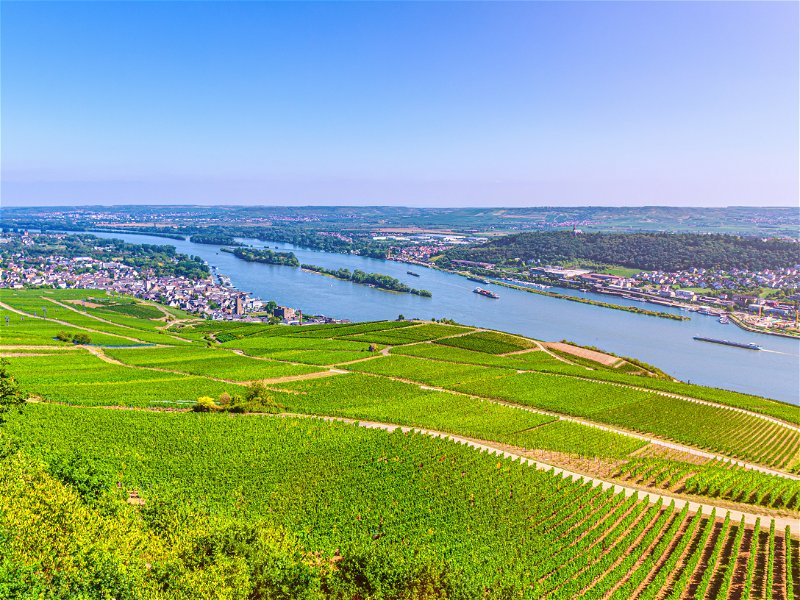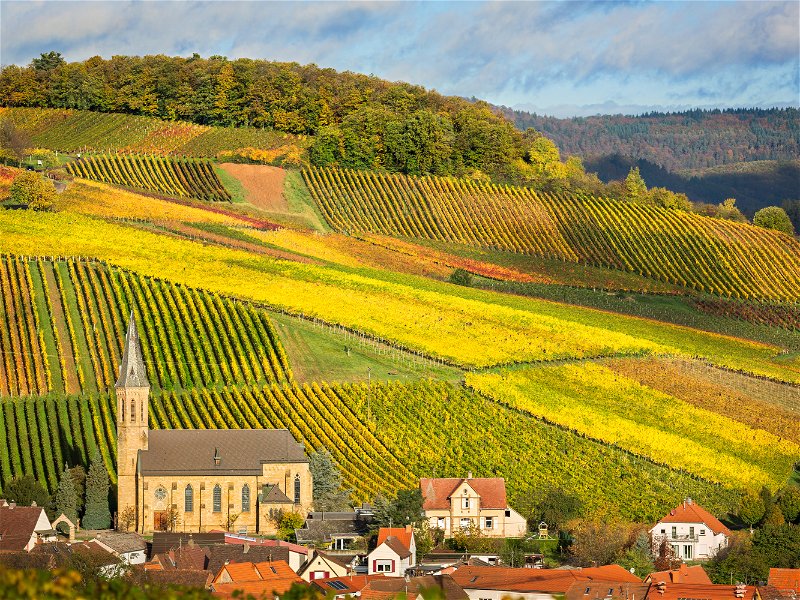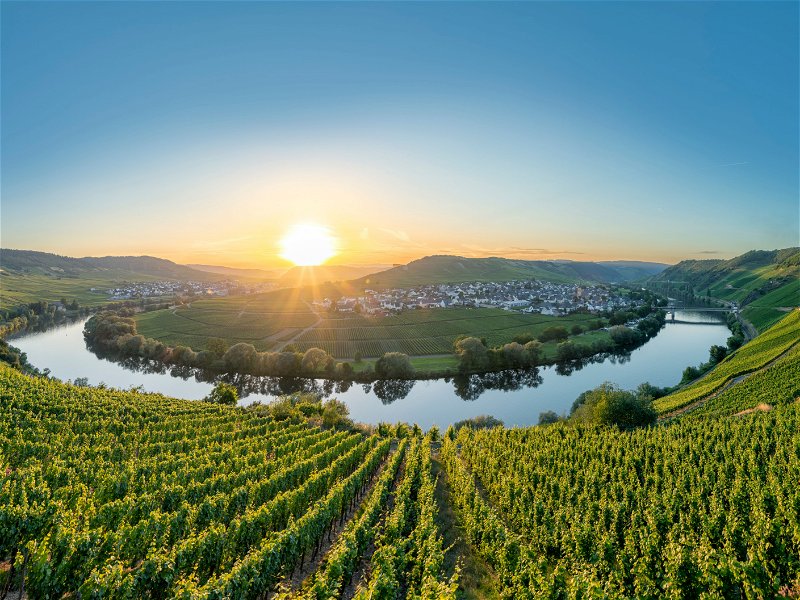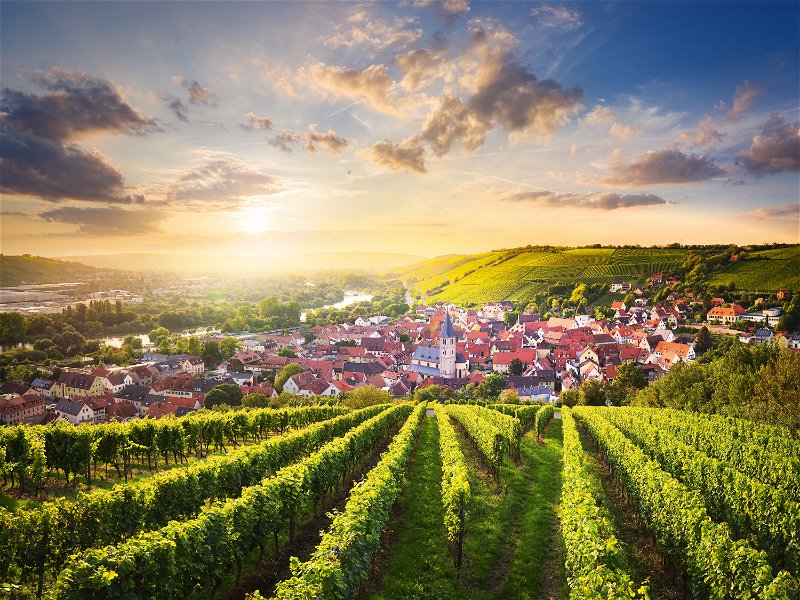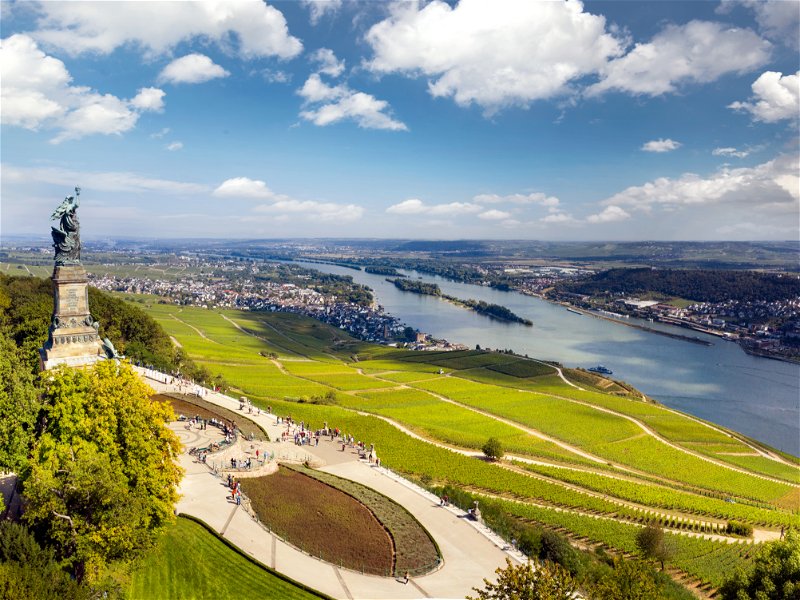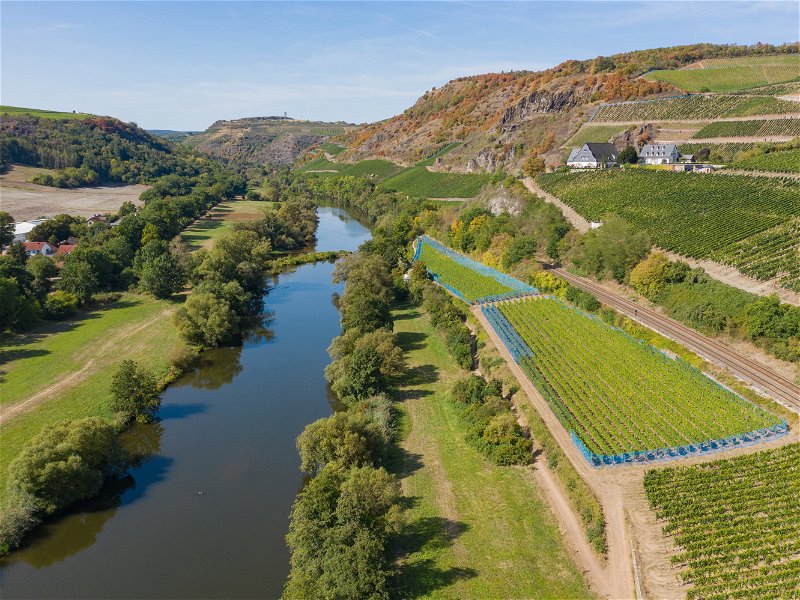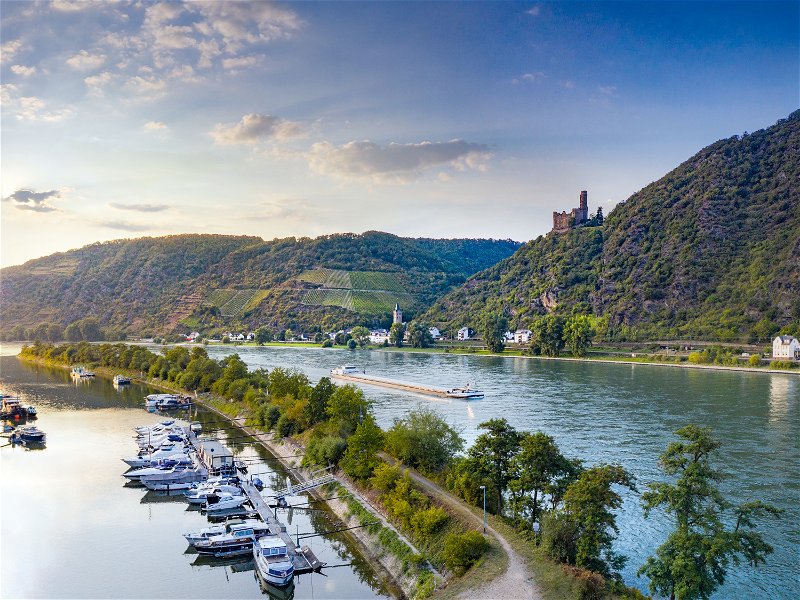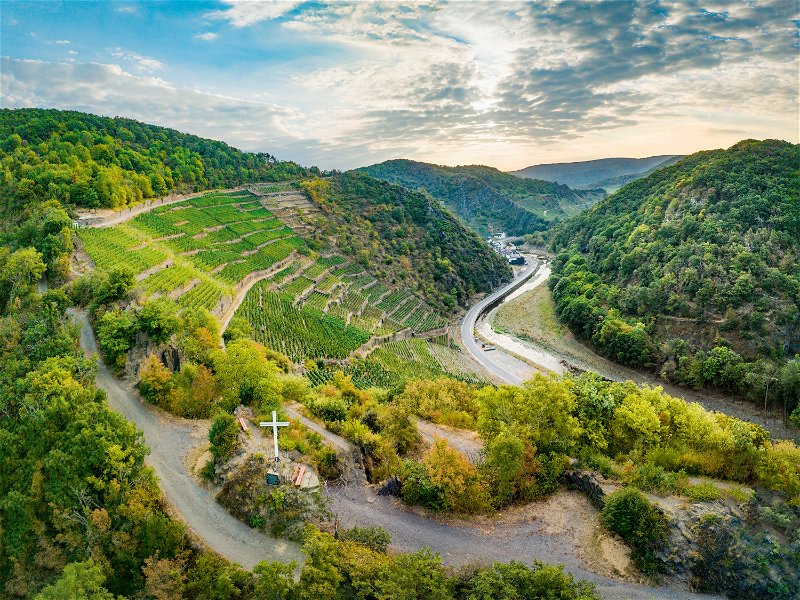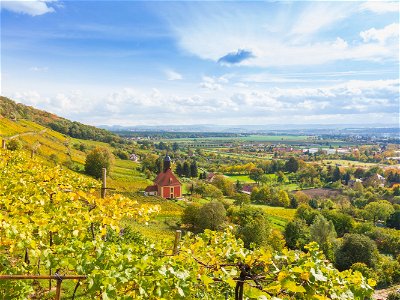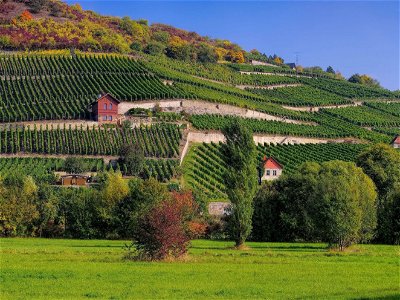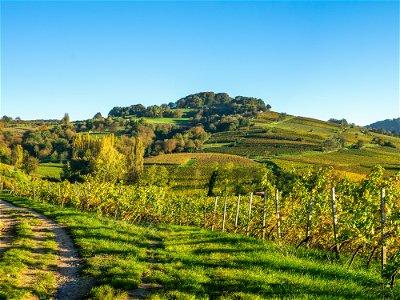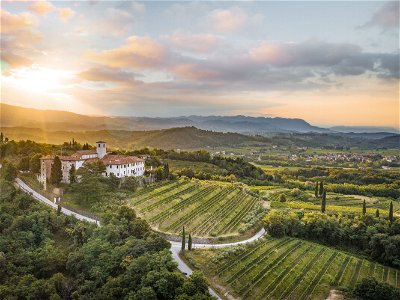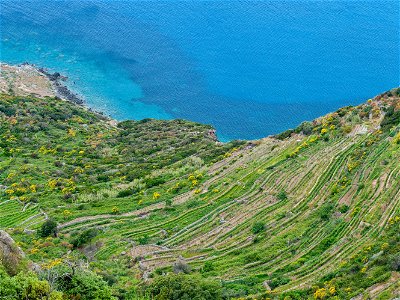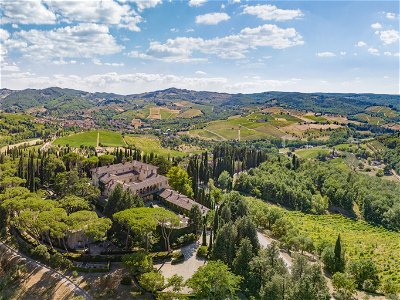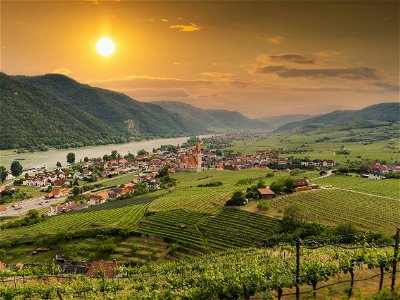Winegrowing in Germany, as in other European winegrowing countries, goes back primarily to the Romans, who brought the vine from the Rhone on their campaign through Gaul to the Moselle. Officially, Emperor Probus is considered the "father" of German viticulture, who expressly allowed Gauls, Spaniards and Britons to produce wine.
Germany then went through an eventful history, from the discovery of the late vintage in the Rheingau at the end of the 18th century, to a first peak at the turn of the 20th century, when wines from Germany were traded more expensively than those from France, for example. The opening of the Suez Canal was not celebrated with Champagne, but with wine from the Pfalz.
After World War II, sweet wines were in vogue for a long time, but the wine culture as we know it today, with many internationally celebrated top wines, especially from Riesling, is due to a dynamic development over the last 30 years. 103,000 hectares are under vine in Germany, spread over 13 growing regions and managed by just over 16,000 winegrowers. With approximately 24,000 hectares of Riesling, Germany has by far the largest cultivation area of this variety in the world. Riesling is particularly at home in the northern wine-growing regions such as Nahe, Rheingau and Mosel, where it stands for a unique and much admired light, playful but intense style of wine, especially in the Mosel, Saar and Ruwer regions.
With over 26,000 hectares, Rheinhessen represents the largest wine-growing area. This region used to be characterised by inexpensive mass-produced wines and the production of base wines for sparkling styles, but is now rightly considered a dynamic and creative showcase region with many young highly committed winemakers.
Rheinhessen, as well as the neighbouring and second largest region, the Pfalz, with at least 23,000 hectares, score with a wide range of grape varieties, from Müller-Thurgau to Pinot Blanc and Pinot Gris to Riesling, as well as with red wines from Pinot Noir and Dornfelder.
The warm climate that now prevails here even allows the cultivation of international varieties such as Sauvignon Blanc, Merlot or Syrah. Further south, in Baden, the Burgundy varieties are really at home, while in Franconia on the Main, the Silvaner can show great form.
The large regions are contrasted by small regions, in the north of the Moselle the Ahr Valley, famous for first-class Pinot Noir, and in the east of Germany, Saxony and Saale-Unstrut. These regions cover just about 500 hectares each.
White wine accounts for about just under two thirds of German wine output. The production of very high-quality sparkling wines is also impressive and offers exciting alternatives to Champagne. The "Verein der Prädikatsweingüter" (VDP) also initiated a site classification system in the 1990s, which has been in force since 2002.
Every German state has its own national dishes, from Labskaus or Finkenwerder Scholle from the Baltic coast to Frankfurter Grüne Soße in Hesse and Pfälzer Saumagen to Weißwürsten in Bavaria. Still a famous classic are the "Königsberger Klopse". However, many of these dishes have undergone exciting updates in gastronomy. In general, with the qualitative rise of wine, the gastronomic scene in Germany has also experienced an enormous improvement; 9 restaurants alone are decorated with 3 stars, 46 with 2 stars, and 272 restaurants can boast at least 1 star.
Wine Regions in Germany
Rheinhessen
Germany's largest wine-growing region (26,500 hectares) was a wallflower for a long time, considered more a provenance of nameless branded wines (Liebfrauenmilch, Blue Nun, Black Tower) than a provenance of individualistic top wines. However, a young generation of winemakers has been digging up the...
Pfalz (Palatinate)
Germany's second largest wine-growing region (23,600 hectares) has undergone a particularly gratifying qualitative development over the past twenty years; hardly anywhere else is there such a high density of owner-managed wineries of excellent reputation. At the same time, all parts of the Pfalz...
Moselle
Abroad, wine from the Moselle is probably the best-known German wine - in the area statistics for Germany, however, the region is only in fifth place. 60 percent of the 8,800 hectares are planted with Riesling. The noble white wine grape grows almost everywhere where a steep slope rises on slate...
Baden
The third largest wine-growing region in this country (15,800 hectares) has very different areas due to its large extension (250 kilometers). On Lake Constance, the delicate, subtle lakeside wines grow at altitudes above 400 meters, mostly from Müller-Thurgau and Pinot Noir. The specialty of the...
Franconia
"Franconian wine is wine for the sick," people used to say. This statement alludes to the wholesome and mineral nature of the typical wine of the region, the Silvaner. In the Steigerwald, large volumes grow on gypsum skeuper soils; moreover, the Silvaner from Iphofen and the surrounding area ripens...
Württemberg
With more than 11,400 hectares Württemberg ranks fourth in the area statistics of German wine-growing regions. This is particularly surprising because wine from Württemberg rarely leaves its region of provenance. The wealthy cities between Stuttgart and Heilbronn almost single-handedly absorb the...
Rheingau
Next to the Mosel Riesling, the Rheingau Riesling is undoubtedly Germany's best-known wine internationally. Yet it is often overlooked how little of it there is. With 3,100 hectares of vineyards, the Rheingau is only in the middle of the German wine growing regions. On the other hand, the...
Nahe
The Nahe is a relatively small river - but wines of undeniable greatness grow on its banks: Riesling dominates in Monzingen, on the upper course of the river, in the middle Nahe valley near Schlossböckelheim, Niederhausen and Norheim, and on the lower course of the river near Wallhausen, Sarmsheim...
Mittelrhein
The Middle Rhine is - thanks to the Loreley - the tourist attraction in German viticulture. As a growing region, however, it is overshadowed by its two more famous neighbours: the Rheingau and the Moselle. Yet Riesling vines also grow on slate soils between Bacharach and Boppard, and the steep...
Ahr
In Germany's fourth smallest wine-growing region, (almost) everything revolves around one variety: Pinot Noir. More than 80 percent of the vineyards are planted with the noble Burgundy grape, which produces red wines of fabulous elegance and finesse on the slate soils of the heat-storing valley....
